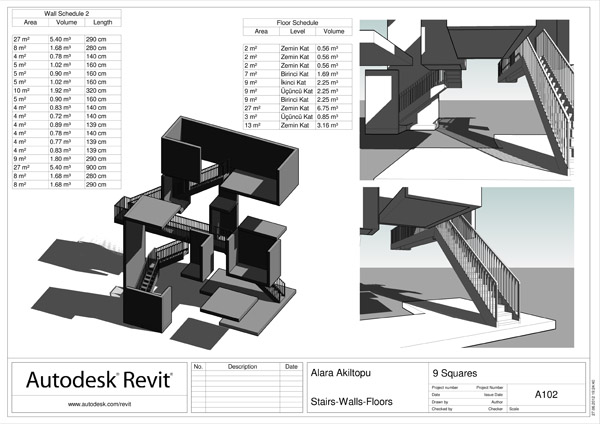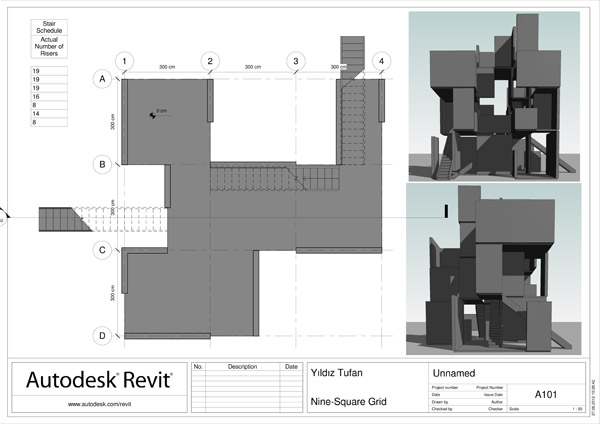Revisiting the Cartesian House
by Tuğrul Yazar | July 18, 2012 14:35
The logical structure of computer-aided architectural design tools is based on object orientation. New design methodologies named Building Information Modeling or Virtual Building aim to improve this structure by synchronizing the digital object classes with real architectural products. Therefore, CAD becomes smart and parametric. But from the design educator’s point of view, most commercial CAD tools are not useful and too complicated to implement basic spatial concepts.
This is the introduction to the above conceptions using a short-term design exercise. Students in their first year of architectural education are introduced to Revit. Unlike traditional drawing exercises, this one aims to improve their spatial construction abilities with fewer preconceptions. The exercise is based on a traditional spatial reasoning exercise of “Cartesian House” which is introduced by John Hejduk and his colleagues at Texas University in the 1950s. Students are encouraged to develop abstract promenades in 3x3x3 gridal cubic spaces.
It is a 3-hour exercise including the introduction to Revit Architecture. Students with no previous experience are gaining spatial understanding quickly. I always fear that these modeling environments are very risky, especially in first-year education, but this implementation of Cartesian House (which is originally done by physical models) seems to be an effective adaptation. One way or another, it’s still Descartes who drives our basic conception of space.

(Student: Alara Akıltopu: İstanbul Bilgi University Architecture First year)

(Student: Yıldız Gizem Tufan: İstanbul Bilgi University Architecture First year)
For more information about the original design exercise, its different implementations and the pedagogical ideas underneath, refer to;
John Hejduk’s “Education of an Architect: The Cooper Union School of Art and Architecture, 1964-1971”
Source URL: https://www.designcoding.net/revisiting-the-cartesian-house/